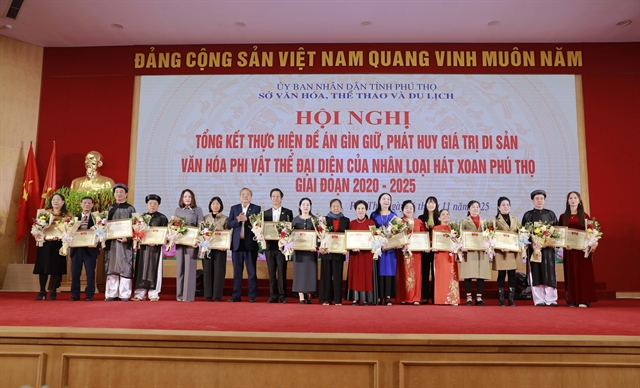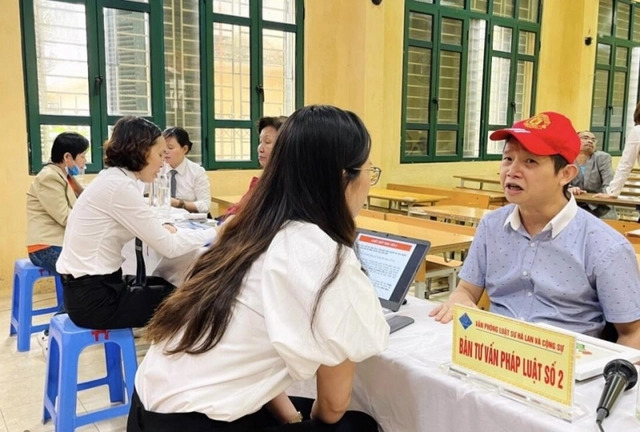 Life & Style
Life & Style

Old, industrial buildings in Hà Nội may well have run their course with many looking like a blot on the capital’s landscape.

|
| Industrial facilities in Hà Nội have been at risk of causing environmental pollution which affects people's health and hinders urban development. — VNA/VNS Photo Danh Lam |
HÀ NỘI — Old, industrial buildings in Hà Nội may well have run their course with many looking like a blot on the capital’s landscape.
But architectural experts believe some of these empty units could provide the ideal location to create cultural spaces, giving dilapidated properties a new lease of life.
These were the issues discussed by experts during a webinar held by architects from Việt Nam and Europe alongside building owners and property managers.
They hope to collaborate and share knowledge on the best solutions to turn run-down buildings into cultural spaces the city can be proud of.
The webinar "Current status of industrial facilities spaces in Hà Nội and international experiences of industrial heritage", was held in Hà Nội recently, supported by EUNIC (the association of European Cultural Institutes and Embassies).
Experts cited examples of similar projects in Europe that have not only restored old buildings but also breathed new life into the communities where they are located.
EUNIC representative Thierry Vergon, Director of L'Espace (Institut français du Vietnam in Hanoi), said: “Many extraordinary examples that can be found everywhere in Europe, and all around the world, show that the transformation of these sites into places dedicated to culture, into spaces fostering creativity, is most often a virtuous model.
“These reconversion projects always have an extremely positive impact on the neighbourhoods where they are installed and are considered by the populations as a factor for improving their environment.
“I believe this webinar comes at the right time to raise awareness among the players involved in the decision process, as a massive relocation of production sites is envisaged in the coming years to Hà Nội.”
According to Lê Quân, Rector of Hà Nội Architectural University, urban renewal is not just a case of replacing old buildings with new ones.
He feels the process can affect the entire city, and bring about positive changes and a feel-good factor.
“With a long tradition of training and experience in international cooperation in heritage and urban renewal research, Hà Nội Architectural University is particularly interested in the topic of this webinar,” he said.
“In the context of the effectiveness of the Architecture Law and its application into our lives, a new approach to recognise the heritage, architectural and cultural values of industrial facilities in the city will provide theoretical and practical bases for urban reconstruction from relocating industrial facilities.”
This, the webinar heard, could cause pollution risks that not only hinder urban development but also have a detrimental effect on people’s health.
It suggested the urgent need to relocate industrial facilities which are not in accordance with current regulations and standards and cause an imbalance in social and technical infrastructure, traffic, environmental pollution and not consistent with the general planning.
Discussions also raised issues about how many of the old buildings have immense historical and cultural value, and restoration should see a focus on giving back to the communities they once served.
Deputy Director of Hà Nội Urban Planning Institute (HUPI) Nguyễn Đức Hùng said: “The land fund after the relocation of industrial production facilities should be given priority for the construction and development of public works, trees, parking lots, social and technical infrastructure works in urban areas.
“These uses don’t increase waste for the inner city, ensuring a balance between the needs of social infrastructure, technology and urban environment.
“The industrial sites having historical, cultural and architectural values must be preserved, restored, embellished in accordance with the provisions of the law of cultural heritage, prioritising the use of these works for public purposes.”
Following the success of the Hà Nội creative space design contest which was jointly organised by the Hà Nội Department of Culture and Sports and the Kiến Trúc (Architecture) magazine in collaboration with the Hà Nội’s People Committee and the Việt Nam Association of Architects, the webinar is an activity of high practical significance, adding empirical experiences to support Hà Nội on the process of becoming a centre of design and innovation convergence in the region – the creative capital of Southeast Asia. — VNS




.jpg)